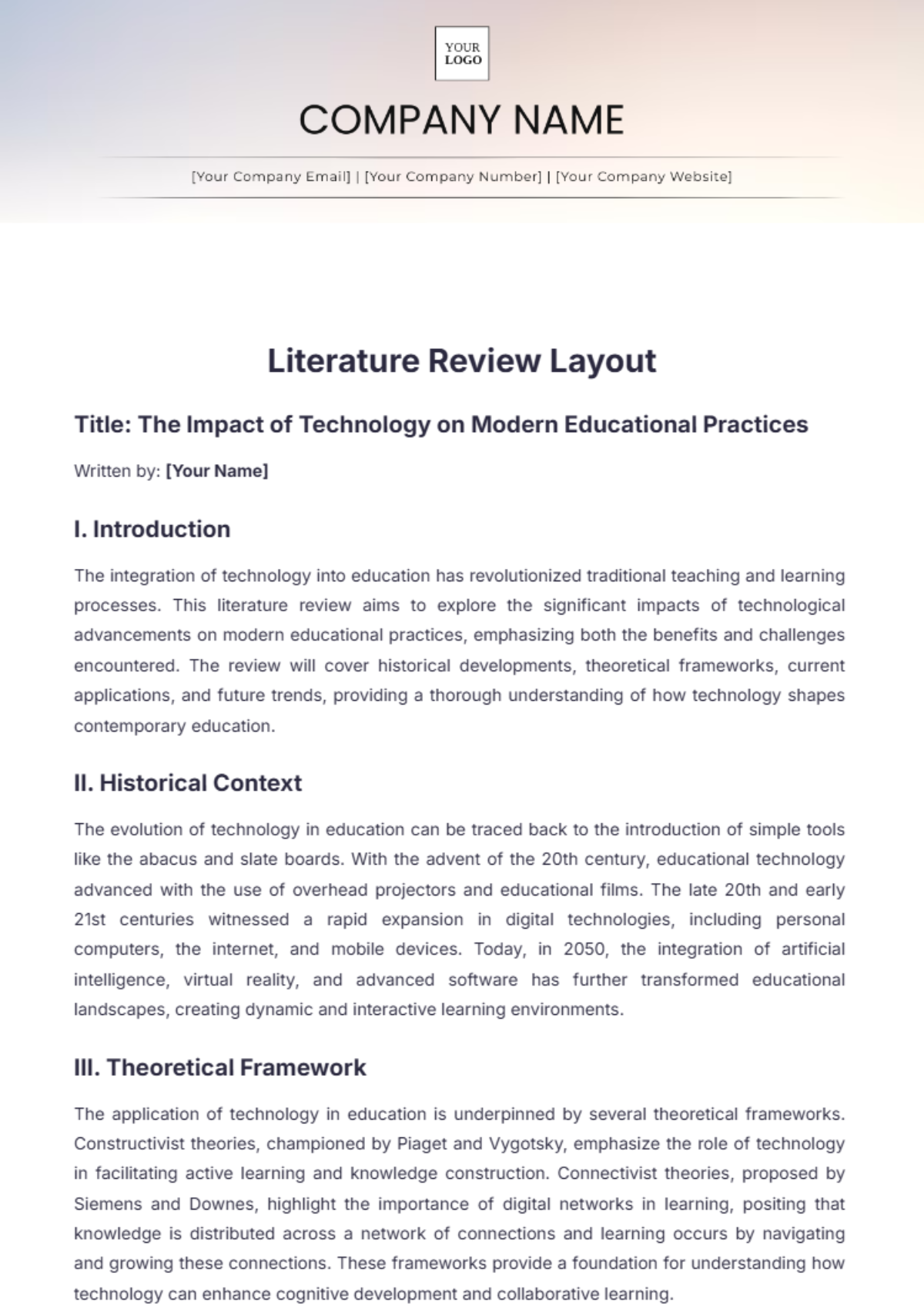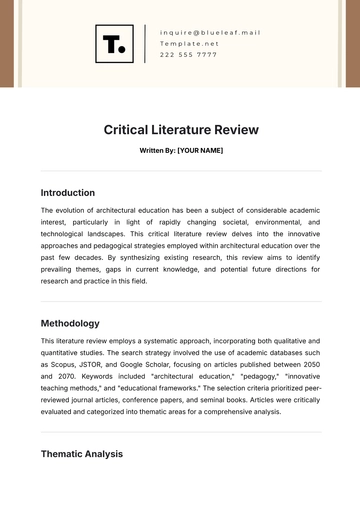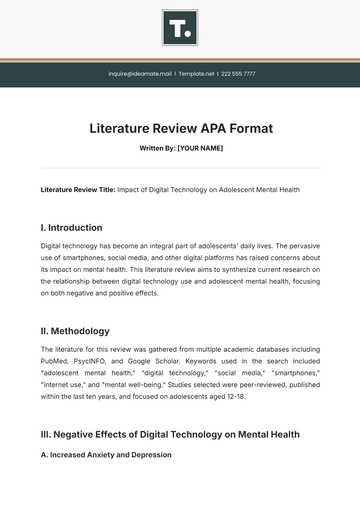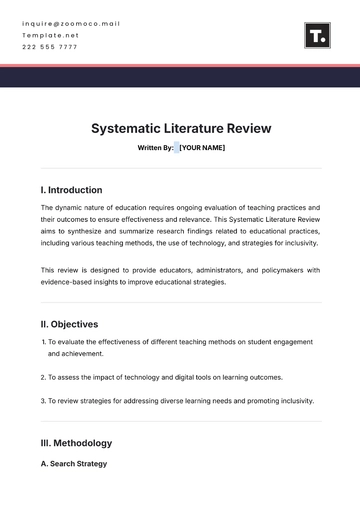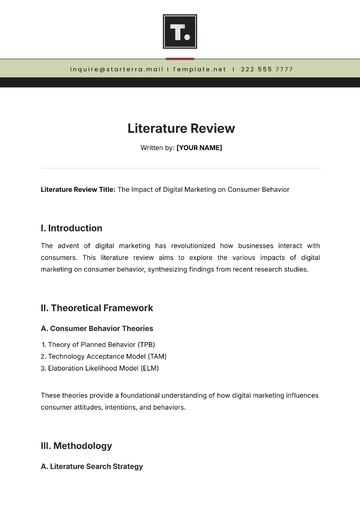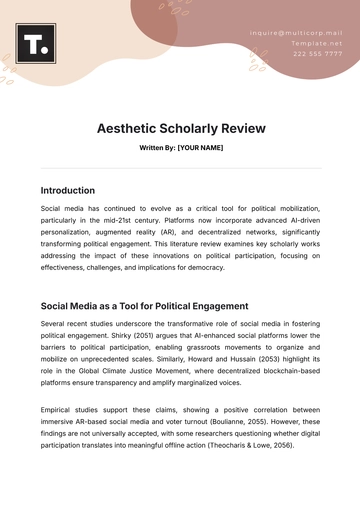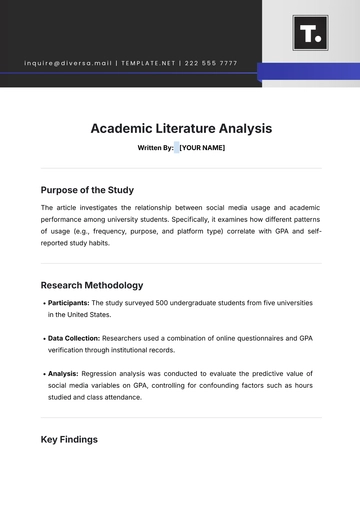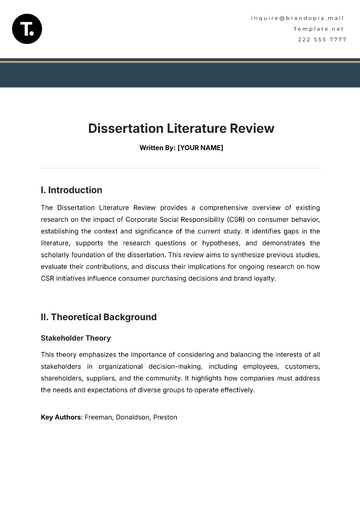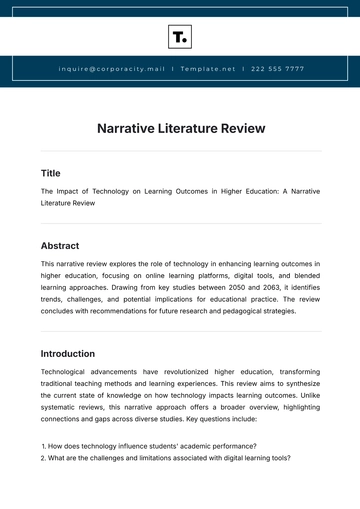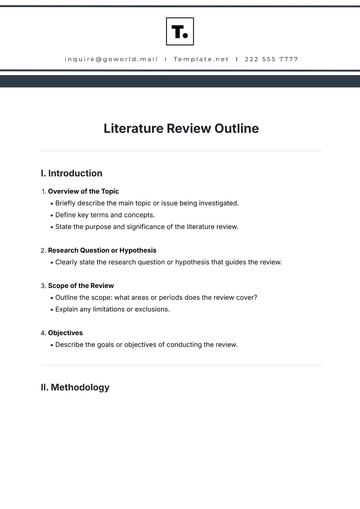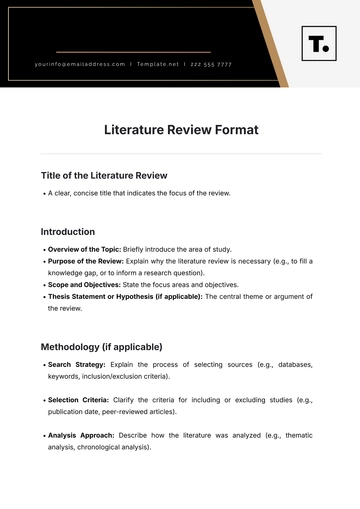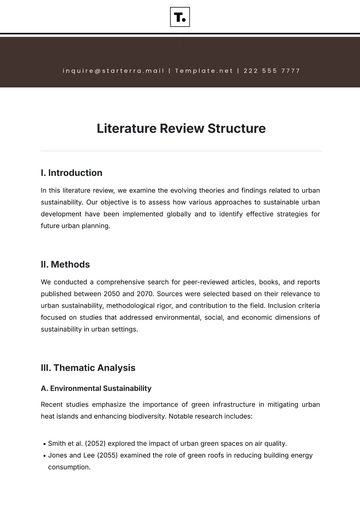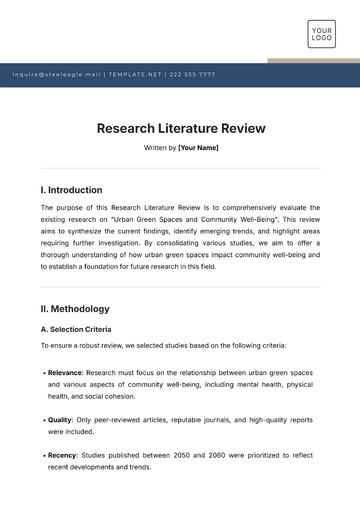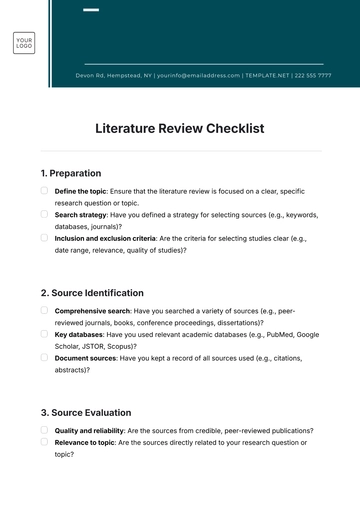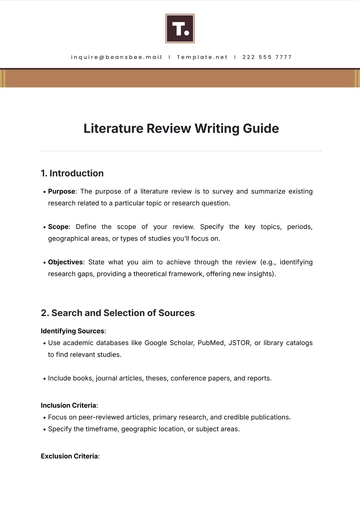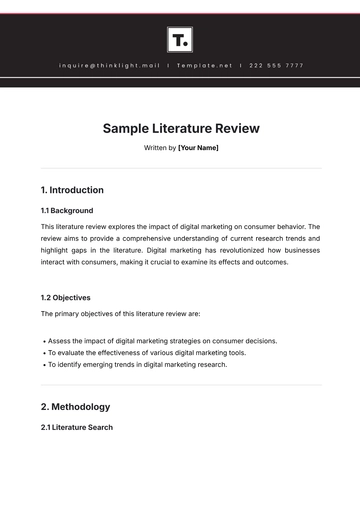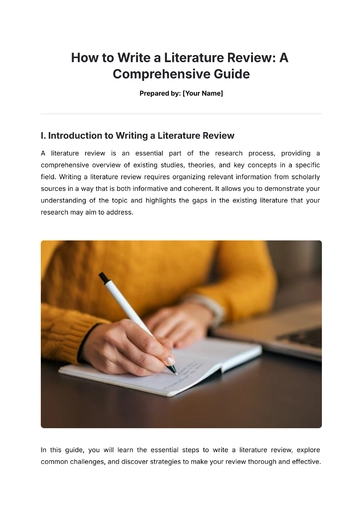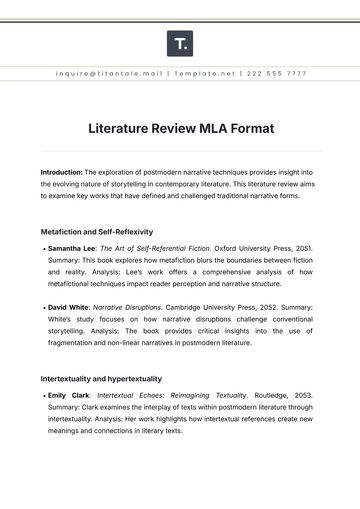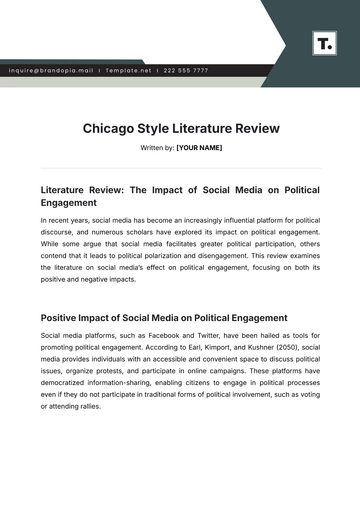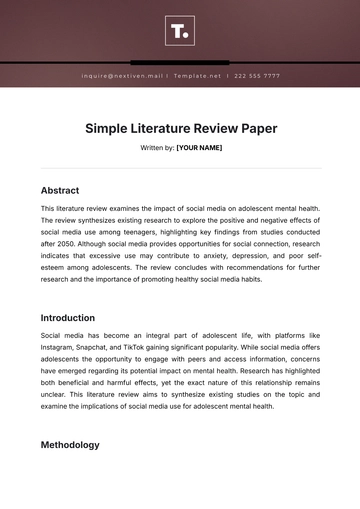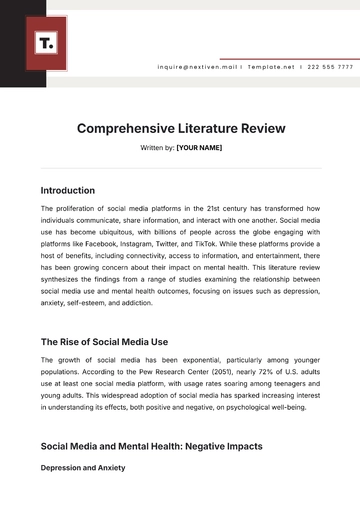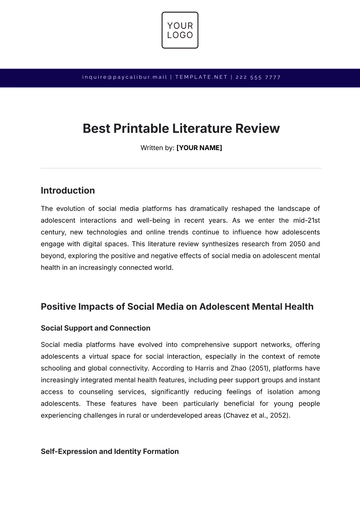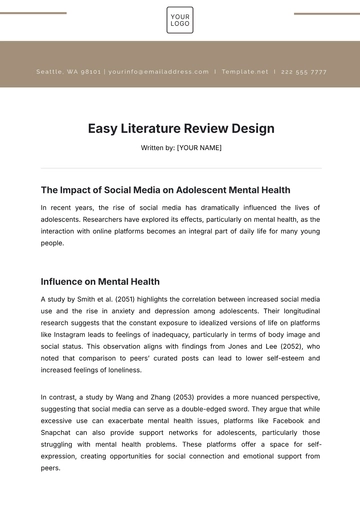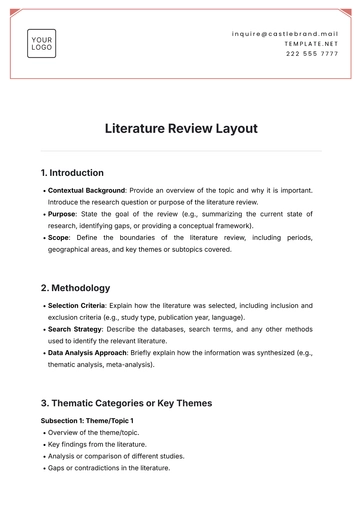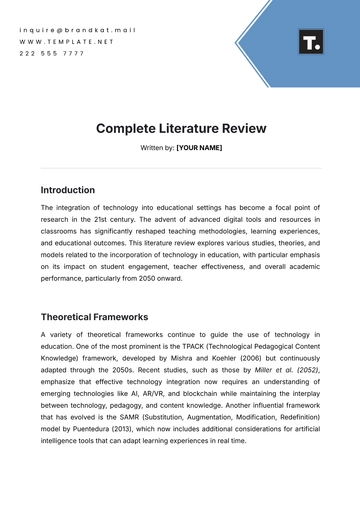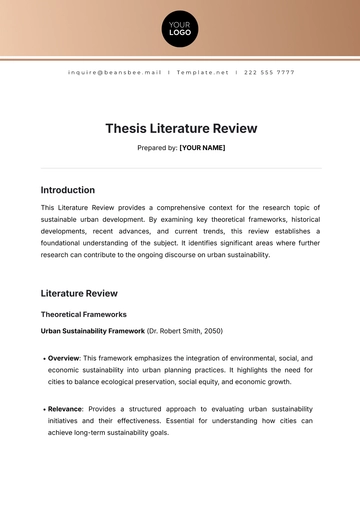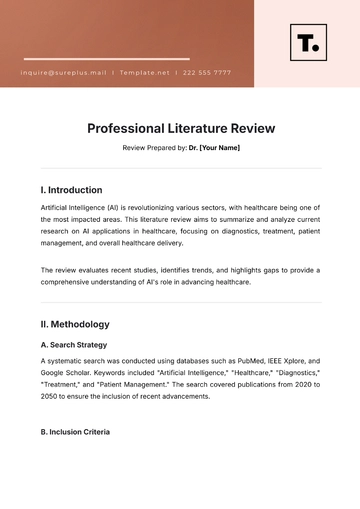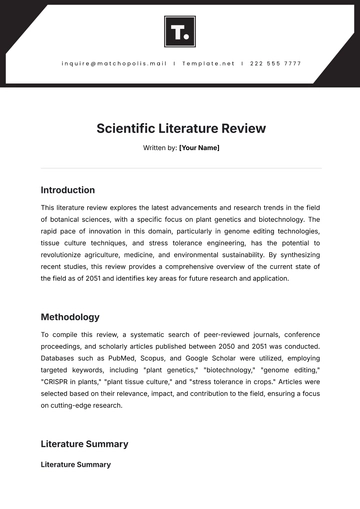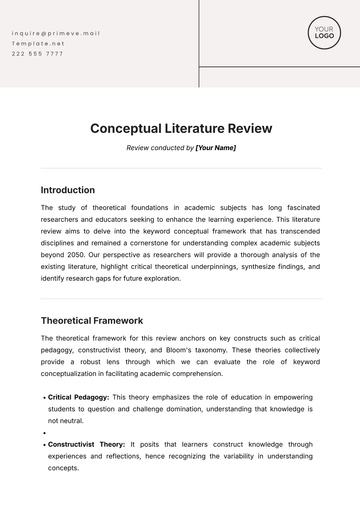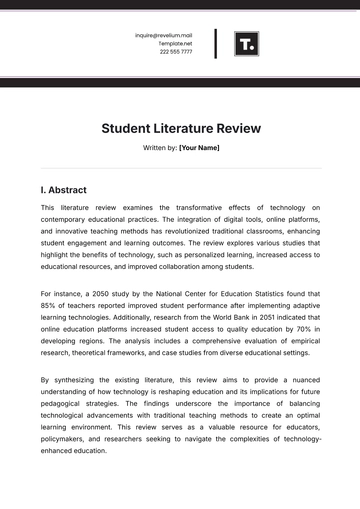Literature Review Layout
1. Introduction
Contextual Background: Provide an overview of the topic and why it is important. Introduce the research question or purpose of the literature review.
Purpose: State the goal of the review (e.g., summarizing the current state of research, identifying gaps, or providing a conceptual framework).
Scope: Define the boundaries of the literature review, including periods, geographical areas, and key themes or subtopics covered.
2. Methodology
Selection Criteria: Explain how the literature was selected, including inclusion and exclusion criteria (e.g., study type, publication year, language).
Search Strategy: Describe the databases, search terms, and any other methods used to identify the relevant literature.
Data Analysis Approach: Briefly explain how the information was synthesized (e.g., thematic analysis, meta-analysis).
3. Thematic Categories or Key Themes
Subsection 1: Theme/Topic 1
Overview of the theme/topic.
Key findings from the literature.
Analysis or comparison of different studies.
Gaps or contradictions in the literature.
Subsection 2: Theme/Topic 2
Overview of the theme/topic.
Key findings from the literature.
Analysis or comparison of different studies.
Gaps or contradictions in the literature.
Subsection 3: Theme/Topic 3 (and so on)
4. Critical Evaluation
Strengths of the Literature: Discuss what the literature contributes to the field, its methodology, and how it advances understanding.
Weaknesses or Limitations: Identify any methodological flaws, inconsistencies, or areas where more research is needed.
Conceptual or Theoretical Gaps: Highlight any gaps in conceptual or theoretical frameworks within the literature.
5. Synthesis and Discussion
Key Patterns and Trends: Identify and summarize the main patterns and trends in the literature.
Contradictions or Conflicting Findings: Discuss conflicting views, findings, or theories in the literature.
Research Gaps: Suggest areas where further research is needed.
Implications for Practice or Policy: Discuss how the findings in the literature can influence practice, policy, or future research directions.
6. Conclusion
Summary: Provide a concise summary of the key findings from the literature.
Research Directions: Suggest possible future directions or studies based on the gaps identified.
Final Thoughts: Reflect on the overall contribution of the reviewed literature to the field.
7. References
List all the references used in the literature review in the appropriate citation style (e.g., APA, MLA, Chicago).
Literature Review Templates @ Template.net
